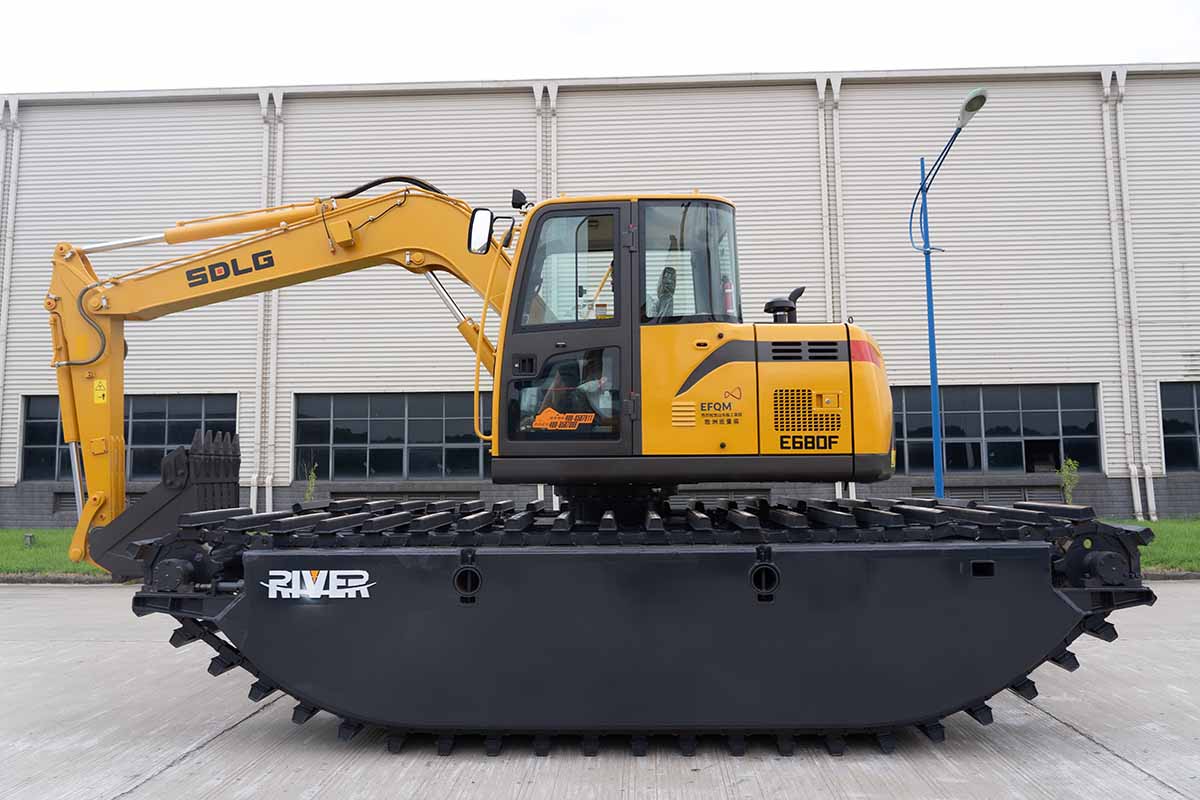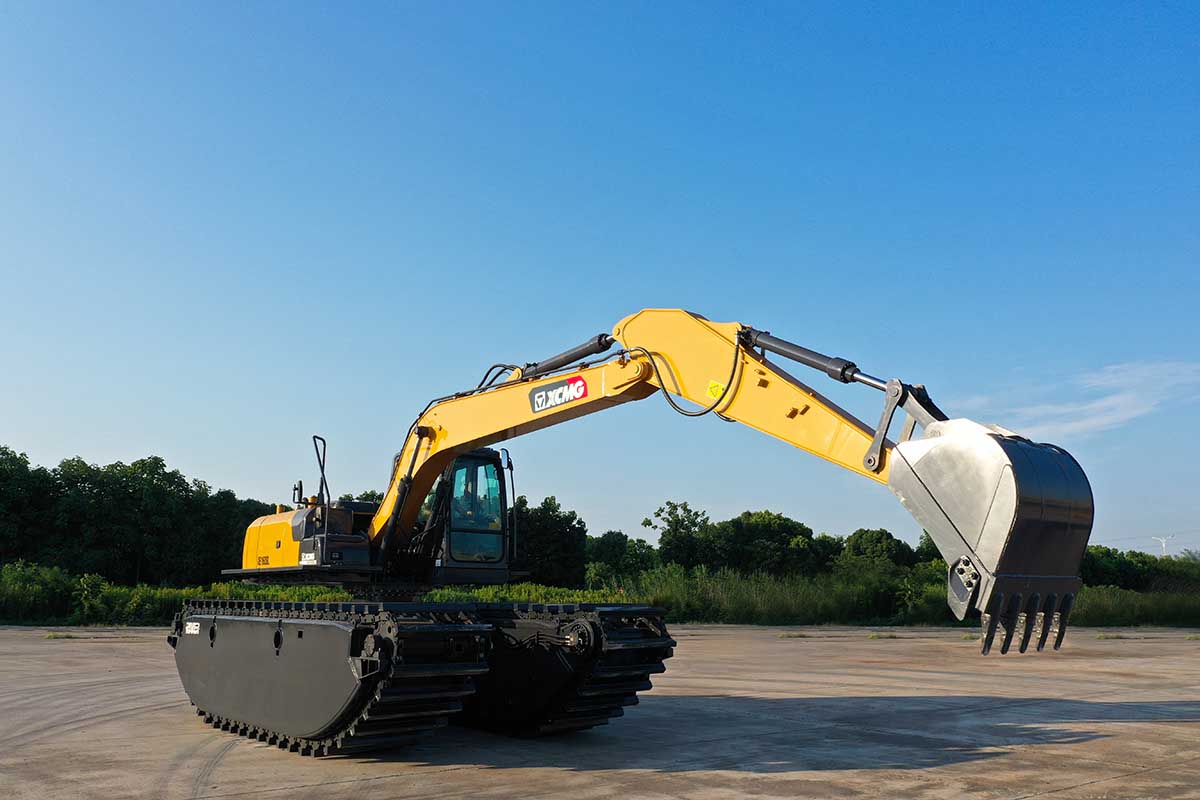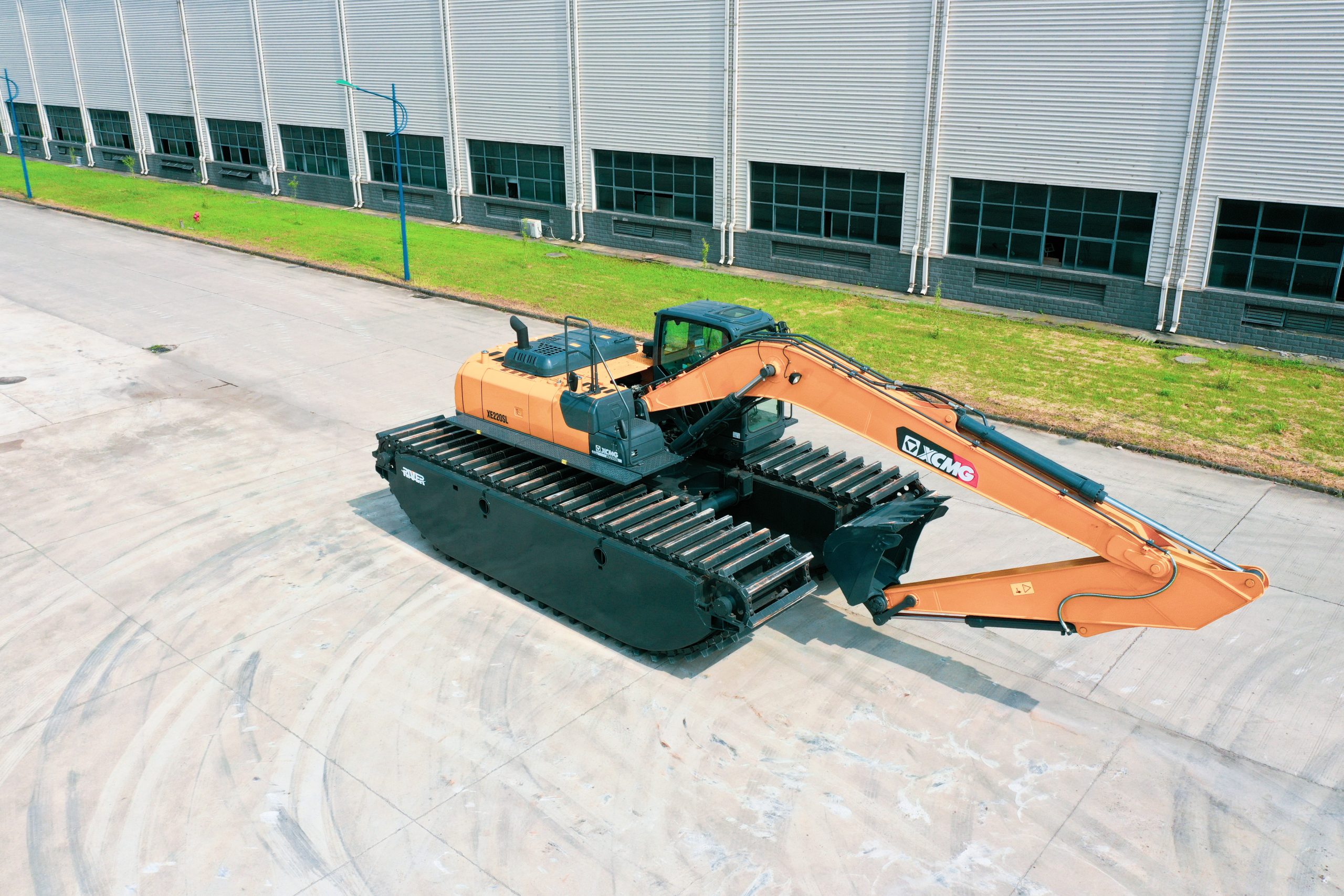Rehabilitating riverbanks is a crucial task for preserving our natural ecosystems and preventing erosion. Traditional land-based equipment often struggles with the unique challenges posed by river environments, leading to the development of innovative solutions. One such solution is the use of floating excavators, which are specifically designed to operate in waterlogged conditions.
These versatile machines offer numerous benefits, making them indispensable for effective riverbank rehabilitation projects. In this article, we’ll explore how floating excavators are transforming riverbank restoration and the advantages they bring to these essential environmental efforts.

What Is a Floating Excavator?
A floating excavator, also known as an amphibious excavator, is a specialized piece of heavy machinery designed to perform dredging, excavation, and other operations in aquatic environments.
Unlike traditional excavators, floating excavators are equipped with pontoons or amphibious undercarriages that allow them to float on water. This unique capability enables them to access areas that are difficult or impossible to reach with conventional land-based equipment.
Floating excavators are widely used in environmental restoration projects, flood control, and construction activities in wetland areas. Their ability to minimize soil disturbance and reduce environmental impact makes them ideal for sensitive ecological zones.
By utilizing floating excavators, riverbank rehabilitation projects can be conducted more efficiently and effectively, ensuring the long-term health and stability of aquatic ecosystems.
Floating Excavator Design
The innovative design of floating excavators is key to their effectiveness in riverbank rehabilitation projects, ensuring they can navigate and operate in challenging aquatic environments with ease.
Amphibious Undercarriage
Equipped with tracks instead of wheels, the amphibious undercarriage provides exceptional traction on soft, muddy, or uneven surfaces encountered in riverbank and wetland environments. Built from corrosion-resistant materials, it withstands prolonged exposure to water, ensuring durability and reliability throughout extensive rehabilitation projects.
Hydraulic Systems
Advanced hydraulic systems empower floating excavators with smooth, precise movements essential for delicate operations like dredging and sediment removal. Enhanced by long-reach arms, these systems enable efficient work in deep water and hard-to-reach areas along riverbanks, optimizing project outcomes with meticulous control and maneuverability.
Operator Cabin
The operator cabin is meticulously designed for safety and comfort, featuring reinforced glass and a robust frame to protect against hazards. Ergonomic seating, climate control functionalities, and expansive windows ensure operators maintain optimal conditions for prolonged operations, enhancing focus and efficiency in challenging environmental conditions.
Attachment Versatility
Floating excavators offer versatility through a wide range of attachments tailored for various tasks including excavation, debris removal, and vegetation management. Quick-change systems facilitate rapid attachment swaps, optimizing workflow efficiency and adaptability to evolving project requirements with minimal downtime.
Design Efficiency
Engineered for optimal performance, floating excavators combine versatility, durability, and operational efficiency tailored to the dynamic demands of riverbank rehabilitation. This design focus maximizes productivity while minimizing environmental impact, supporting sustainable practices and achieving comprehensive restoration goals effectively.

Advantages of Floating Excavators in Riverbank Rehabilitation Projects
Floating excavators offer unique advantages in riverbank rehabilitation, significantly enhancing project efficiency and effectiveness. These specialized machines are tailored to navigate aquatic environments, providing access to inaccessible areas crucial for comprehensive restoration efforts. The following is how floating excavators aid in riverbank rehabilitation projects:
Enhanced Accessibility to Difficult Areas
Floating excavators excel in enhancing accessibility to challenging riverbank and wetland areas that are otherwise difficult to reach. Their ability to navigate shallow waters and soft terrains allows them to penetrate remote locations where traditional equipment cannot operate effectively.
This capability is crucial for conducting thorough assessments and implementing precise rehabilitation measures in ecologically sensitive zones, ensuring comprehensive restoration efforts across diverse aquatic landscapes.
Minimized Soil Disturbance
One of the key advantages of floating excavators is their specialized design, which minimizes soil disturbance during operations. Unlike land-based machinery, these excavators distribute weight more evenly on their pontoons or amphibious undercarriages, reducing the impact on fragile ecosystems.
This approach helps preserve natural habitats, prevent erosion, and maintain soil stability along riverbanks and wetlands. By minimizing disruption, floating excavators support sustainable rehabilitation practices that prioritize ecosystem health and long-term resilience.
River and Lake Maintenance
Floating excavators play a pivotal role in the maintenance of rivers and lakes by facilitating efficient sediment removal, debris clearance, and vegetation management. These tasks are essential for improving water flow dynamics, preventing sediment buildup, and enhancing water quality.
By clearing obstructive elements, floating excavators contribute to the overall health of aquatic ecosystems, promoting biodiversity and supporting sustainable water management practices in natural and man-made water bodies.
Environmental Cleaning
In environmental cleaning initiatives, floating excavators are instrumental in removing pollutants, debris, and invasive species from water bodies. Their precision and versatility enable targeted cleanup operations that mitigate environmental degradation and restore ecological balance.
By removing contaminants and restoring natural habitats, floating excavators support the recovery of aquatic ecosystems, contributing to cleaner waterways and healthier environments for both wildlife and communities.
Flood Control and Management
Floating excavators are essential tools in flood control and management strategies, particularly in maintaining and reinforcing riverbanks and floodplains. These machines facilitate dredging operations that improve water flow capacity, mitigate flood risks, and protect adjacent communities from inundation.
By enhancing drainage efficiency and reducing sediment accumulation, floating excavators support effective flood prevention measures, safeguarding infrastructure and enhancing resilience against natural disasters.
Wetland Restoration
In wetland restoration projects, floating excavators are indispensable for reclaiming degraded wetland habitats and improving their ecological functionality. These machines assist in removing invasive vegetation, restoring natural water flow patterns, and reshaping terrain to recreate wetland biodiversity.
By recreating habitats for native species and enhancing water retention capabilities, floating excavators contribute to the ecological health and resilience of wetlands, promoting their role in flood control, water filtration, and biodiversity conservation.

Wrap-Up!
Floating excavators represent a pivotal advancement in riverbank rehabilitation and environmental management. Their ability to enhance accessibility to remote areas, minimize soil disturbance, and facilitate crucial maintenance tasks in rivers, lakes, and wetlands underscores their importance in preserving natural ecosystems.
From environmental cleaning to flood control and wetland restoration, these specialized machines play a vital role in promoting sustainable practices and safeguarding water resources. By supporting comprehensive rehabilitation efforts and mitigating environmental impact, floating excavators contribute significantly to the resilience and health of aquatic environments worldwide.
